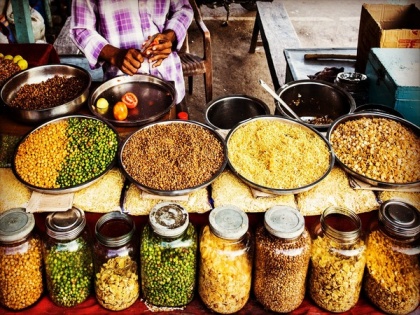India's pulses import almost doubled in 2023-24, it may rise further this year
By ANI | Published: April 17, 2024 08:01 AM2024-04-17T08:01:47+5:302024-04-17T08:05:03+5:30
New Delhi [India], April 17 : Despite several measures, including various incentives to farmers, India is still dependent on ...

India's pulses import almost doubled in 2023-24, it may rise further this year
New Delhi [India], April 17 : Despite several measures, including various incentives to farmers, India is still dependent on imports of pulses for its domestic requirements.
Pulses import have almost doubled in 2023-24 to USD 3.74 billion.
However, the official figure is yet to be disclosed, and estimates suggest shipments have crossed 45 lakh tonnes in the just-concluded financial year 2023-24 as against 24.5 lakh tonnes a year ago.
Government sources toldthat to meet domestic demand and keep prices in check, government is negotiating with new markets like Brazil and Argentia for long-term contract for pulses imports.
Over 20,000 tonnes of urad will be imported from Brazil and negotiations are almost at final stage to import arhar from Argentina.
The government has also contracted with Mozambique, Tanzania and Myanmar to import pulses.
The surge in imports in recent months is to boost domestic supply and keep prices in check.
Earlier, government has allowed duty-free imports of yellow peas till June this year and duty-free import of arhar and urad till march 31, 2025.
Inflation on pulses is a major concern for the government when the election process is underway. Recent figure suggests pulses inflation at 17 per cent in March and 19 per cent in February this year.
To keep prices in check, the government has imposed stock limits on pulses on Monday, April 15, and asked states to be vigilant against hoardings.
But the concern is that despite various incentives by government, like guaranteed purchase and higher MSP, domestic production of pulses has declined in last 2-3 years. Agriculture ministry estimates suggest pulses production in 2023-24 will be at 234 lakh tonnes.
Last year, the production was 261 lakh tonnes.
In 2019-20, domestic pulses production was 230.25 lakh tonnes, but after various incentives from the government in 2020-21, production rose to 254.63 lakh tonnes, in 2021-22 it further rose to 273.02 lakh tonnes but in 2022-23, it declined to 260.58 lakh tonnes.
Kharif Production this year (FY24) is expected to come down from 76.21 lakh tonnes to 71.18 lakh tonnes, Urad Production is expected to come down from 17.68 lakh tonne to 15.15 lakh tonnes, whereas Moong Production is expected to come down from 17.18 lakh tonnes to 14.05 lakh tonnes.
Experts say the decline in domestic output is also because of erratic climate conditions in key producing regions.
But the concern is also that, after seeing an uptrend, the pulses sowing area has also reduced in the last 3-4 years, from 307.31 lakh hectares in 2021-22 to 257.85 lakh hectares in 2023-24. In two years, sowing area reduced by 16 per cent and production by almost 14 per cent.
The Reserve Bank of India has also highlighted that food price pressures are posing challenges in bringing inflation down to the target of 4 per cent, and the price of pulses is playing an important role in inflation numbers.
India is a large consumer and grower of pulses and it meets a portion of its consumption needs through imports. India primarily consumes chana, masur, urad, kabuli chana, and tur.
Disclaimer: This post has been auto-published from an agency feed without any modifications to the text and has not been reviewed by an editor
Open in app